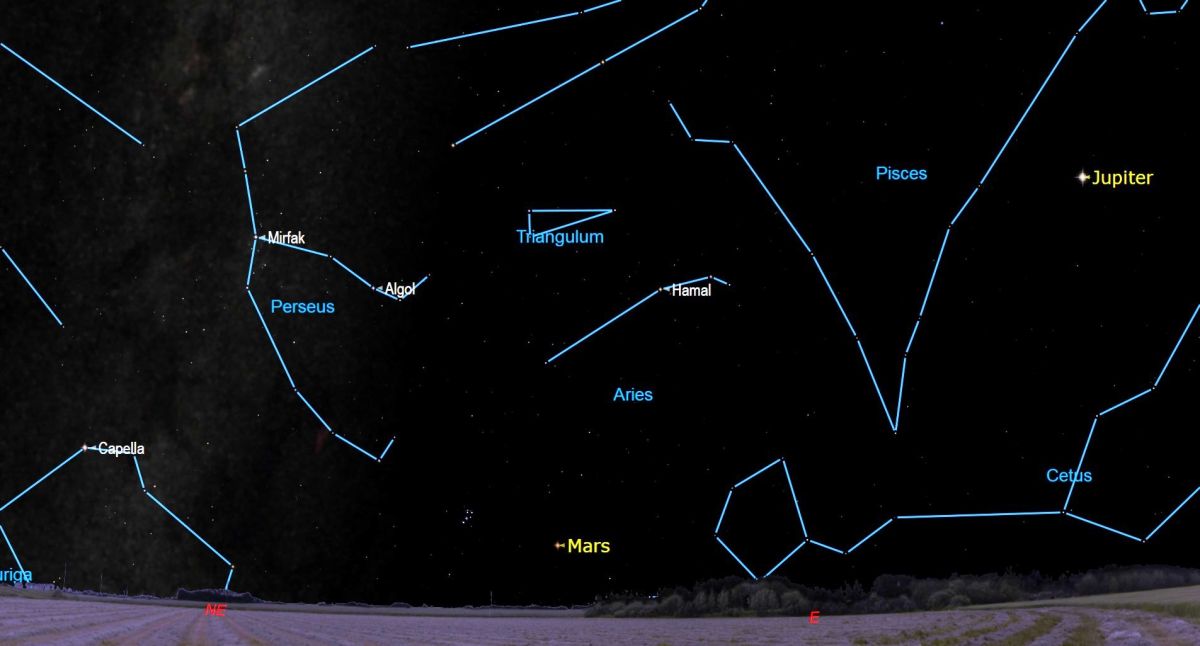Mars enters the evening sky tonight, here's how to find the Red Planet
The Red Planet will be visible along with Jupiter, Saturn and Uranus.

The Red Planet is finally rising before midnight.
Mars will start showing up in the evening sky Saturday (Aug. 13), although finding it will be tough for the first few days. The upshot, however, is that Jupiter, Saturn and Uranus are still pretty visible during various parts of the dark-sky hours.
Mars will be quite low on the eastern horizon, becoming more visible a few minutes after midnight local time. Luckily, it's hard to miss that planet, given it glows so red in the dark.
Handily, it won't be too far from the Pleiades, the name the International Astronomical Union assigns to a cluster of shiny stars in the constellation Taurus. (Your tradition may have other names for these various astronomical objects.)
Related: Best stargazing tents: keep warm and dry when skywatching

Looking for a telescope for the next stargazing event? We recommend the Celestron Astro Fi 102 as the top pick in our best beginner's telescope guide.
Your view of the home of the Perseverance rover will be enhanced if you have binoculars or a low-power telescope, but Mars still looks great with the naked eye. Mars will continue to brighten throughout August, in fact, moving from +0.20 magnitude to a more brilliant -0.12, according to our August 2022 skywatching guide.
Uranus is steadily rising earlier, becoming visible in binoculars or telescopes at 10:20 p.m. local time by month's end, while evening-sky and brilliant Jupiter is getting ready for a close encounter with the moon you can spot with the naked eye Sunday (Aug. 14). Saturn, meanwhile, is reaching opposition and visible all night.
Get the Space.com Newsletter
Breaking space news, the latest updates on rocket launches, skywatching events and more!
If you're looking for a telescope or binoculars with which to watch Mars, go to our guides for the best binoculars deals and the best telescope deals now. Our best cameras for astrophotography and best lenses for astrophotography can also help you prepare for the next skywatching sight on your own.
Follow Elizabeth Howell on Twitter @howellspace. Follow us on Twitter @Spacedotcom or on Facebook.
Join our Space Forums to keep talking space on the latest missions, night sky and more! And if you have a news tip, correction or comment, let us know at: community@space.com.

Elizabeth Howell (she/her), Ph.D., was a staff writer in the spaceflight channel between 2022 and 2024 specializing in Canadian space news. She was contributing writer for Space.com for 10 years from 2012 to 2024. Elizabeth's reporting includes multiple exclusives with the White House, leading world coverage about a lost-and-found space tomato on the International Space Station, witnessing five human spaceflight launches on two continents, flying parabolic, working inside a spacesuit, and participating in a simulated Mars mission. Her latest book, "Why Am I Taller?" (ECW Press, 2022) is co-written with astronaut Dave Williams.









